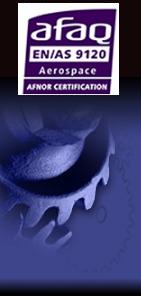Virtually all rolling
element bearings are designed with a specific internal clearance. The internal clearance
is defined as the total clearance between the rings and the rolling elements. This
clearance provides:
- Free rotation of rolling element
- Compensation for thermal expansion
- Optimum load distribution
Selecting the correct
internal clearance is important because bearings hold the rotating parts of a mechanism in
proper position across the entire performance envelope of the application. The amount of
internal clearance can influence:
- Noise
- Vibration
- Heat build-up
- Fatigue life
Vibration, interface
fits and temperature will also have some affect on internal clearance. To obtain the
optimal internal clearance for a specific application, these parameters must be taken into
consideration. In certain applications, the correct choice of clearance for the bearings
is critical. Internal clearance can be separated into two categories:
The total internal
clearance is the amount that one ring can be displaced relative to the other ring, either
radially or axially. The radial clearance is the total clearance between the raceway and
the rolling elements - measured normal to the bearing axis. The clearance changes with the
expansion or contraction of the bearing rings. The axial clearance is the total amount
that one ring can be displaced relative to the other in an axial direction.
In ball bearings, as
the radial clearance increases, the axial clearance increases as well. The more room
between the balls and the rings (radial clearance), the more the elements can shift in
relation to each other. Generally, internal clearances are designated from C1 (the
tightest) through to C5 (the loosest or largest). The 'normal' clearance is CN, a range
sitting between C2 and C3. It is worth noting that if the bearing clearance is not stated
in the bearing reference it can be assumed to be normal clearance. With a higher clearance
there is more tolerance of thermal expansion effects on the rings and rolling elements.
When noise and vibration must be restricted, lower clearances are necessary. Ultimately
the specific application and operating conditions determine the appropriate internal
clearance. For example, paper-drying machines that operate under hot conditions usually
need C3 and C4 clearances. The severe vibration in vibrating screens normally means that
C3 and C4 clearances are required. Selection of the correct radial internal clearance
group is by calculation and you should refer to your bearing manufacturers handbook.
Factors to be assessed include:
- Expansion of the inner ring due to interference fit on shaft
- Contraction of the outer ring due to interference fit in the
housing
- Differential temperature between the inner and outer rings
- Differential expansions due to non-ferrous mountings
In addition to the ISO clearances,
manufacturers such as NSK also offer specific clearances for electric motors known as CM
clearance. This class includes a tighter noise specification. The CM clearance falls
within the range of the CN clearance. Some motor manufacturers specify CM clearance where
closer radial internal clearance helps reduce noise. C3 clearance, which is frequently
used in the aftermarket, is greater than the CN and CM clearances.








